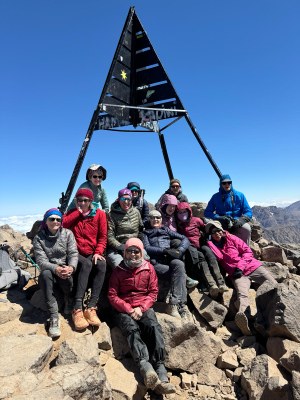
Trip Report
Global Adventure - Explore Morocco’s Ancient Cities, Oases and Desert Dunes, and Trek the High Atlas to Mt Toubkal
Wonderful 14 day trekking and sightseeing trip to Morocco.
- Sun, Apr 14, 2024 — Tue, Apr 30, 2024
- Global Adventure - Explore Morocco’s Ancient Cities, Oases and Desert Dunes, and Trek the High Atlas to Mt Toubkal
- Explore Morocco’s Ancient Cities, Oases and Desert Dunes, and Trek the High Atlas to Mt Toubkal
- Global Adventures & Backpacking
- Successful
-

- Road suitable for all vehicles
-
We spent 7 days trekking from village to village on our way to climb up Toubkal Peak. There was always a trail that was somewhat maintained. These trails are used for local people to travel from one village to the other. For the most part the trails were in good condition, but can be rocky and slippery with scree.
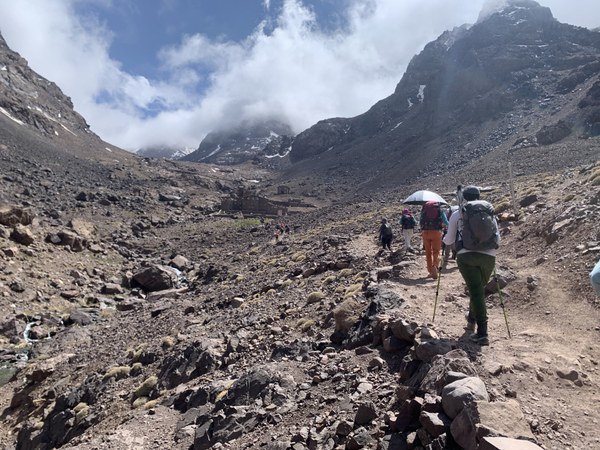
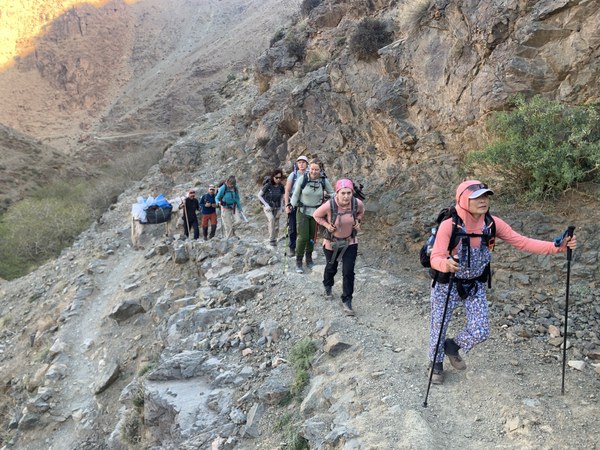
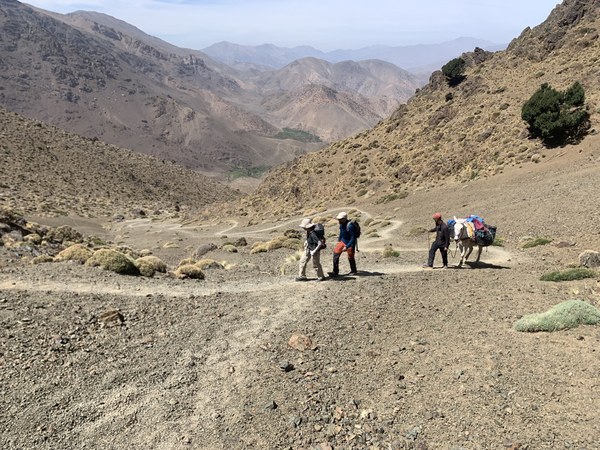
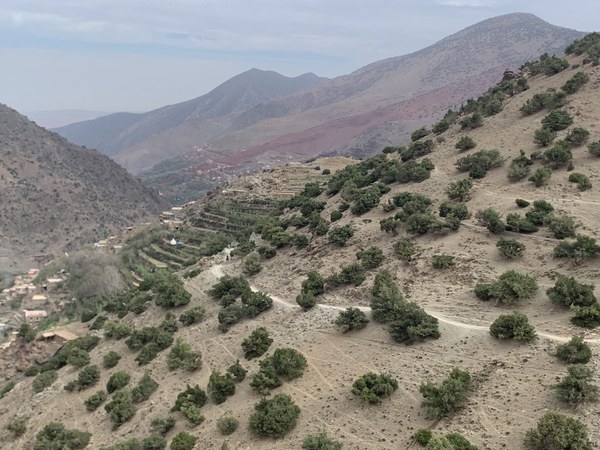
Our trip started in Marrakesh and ended in Tangier. Marrakesh is famous for their markets called “Souk” located in the oldest part of the city, “the Medina”, which was originally founded in the 11th century. As you walk through the narrow walkways of the souks you can feel that this place has been around for hundreds of years. You can purchase anything from fresh flowers, pottery, shoes, clothes, leather goods and numerous other merchandises. Remember haggling for a good price is a common practice. The Jemaa al-Fnaa is the large square located in the center of the Medina. At night the square comes alive with musicians, snake dancers, carnival like atmosphere along with hundreds of restaurants for you to delight in kababs, tajine dishes, fresh fish, fresh fruit stands and their famous “Babbouche” snails simmered in a flavorful broth of 15 different spices.
One of the highlights of the trip was trekking in the Western High Atlas Mountains through remote villages on our way to the summit of the tallest mountain in North Africa, Mount Jebel Toubkal at 13,671 feet. We passed through small Berber villages and admired their way of life, growing agriculture, tending to their goats and farm animals. Unfortunately, some of these villages were hit hard by the earthquake that occurred in the fall of 2023. Numerous families are living in temporary tents and shelters until their homes can be repaired.
We began our 7-day, 50+ miles trek starting at the village of Agersioual on our way to the summit of Jebel Toubkal. Below is our itinerary with mileage:
Day 1: 7.0 miles to Tizziane
Day 2: 7.0 miles to Thkent
Day 3: 6.6 miles to Tissi Oussem
Day 4: 5.5 miles to Armed (Around)
Day 5: 5.6 miles to Base camp of Toubkal
Day 6: 4.2 miles to Summited Toubkal and back to Base Camp for the night.
Day 7: 5.8 miles back to Armed (Around).
Climbing to the peak of Toubkal was spectacular. Our group of 12 and two guides left base camp a few hours later (7am) than most other people staying there. By the time we reached the summit we were the only ones up there. Spent a good 30 minutes on the summit taking pictures and looking at the mountain ranges beyond. Sharing this moment with the group was amazing. It was a sunny day, little wind, and blue skies. It was around 30 degrees in the morning but warmed up to around 45 degrees by the time we reached the summit. Everyone made it up the summit with no difficulties. We went slowly and took several breaks along the way. The hardest part of the entire climb was coming down. There were numerous spots where the trail was steep with lots of fine scree.
The Second week of our journey took us over the highest drivable pass in Morocco called Tizi-N-Tichka at 7,414 feet. Views of the winding road can be seen from the top. Our next stop was in the Dades Valley with its unique rock formations as well as agricultural land parcels that has been managed by local families for hundreds if not thousands of years. They grow everything from corn, onion, almond and olive trees, oranges, berries, and wild artichokes, etc. On our way to the Sahara Desert, we visited Ait Bin Haddou Kasbah, which is a UNESCO World Heritage site that was bult in the 11th century. These Kasbahs were built to protect the inhabitants from outside threats. A few families still live within the Kasbah, but most are now tourist gift shops. We drove farther north to visit two gorges: Dades valley and Todra Gorge. The Dades valley is in a large canyon with a river running through it. We spent an hour walking amongst the agriculture plots that were being tended to by various families. We then drove to and walked through Todra Gorge, which is steeper and narrower than the Dades gorge, but it was over-run by tourist, tourist buses and very congested. Although, a very beautiful site but crowded.
We continue to the town of Erg Chebbi which is the gateway to the Sahara Desert. Spent the night in a fabulous Hotel called Riad Merzouga Dunes located on the edge of the Sahara. In the distance you can see nothing buy high sand dunes and numerous camels corralled and ready to take passengers into the desert. Spent time in the famous village Khamlia. Known for the Gnawa people who came here during the slave trades from Sudan in the 15th and 16th centuries. They are famously known for their spiritual musical talents. Even some have become professional musicians and are currently traveling around the world playing their traditional music. Khamlia is also famous for the Salt Caravans that use to travel from Timbuktu in Mali.
That evening we continued our time into the desert by riding camels to our Bedouin luxury camp. We stopped on a high sand dune mountain to view the sunset before continuing to our camp. Very classy place with rugs for walkways, firepit for the evening gathering, tents with twin beds and private baths. Large dining area that we enjoyed our tajine dinner by candlelight. Afterwards we sat around the campfire listening to music performed by our camp caretaker as well as our guides and a few of our own travelers taking part in playing some local instruments. The next morning, we road our camel’s back into town. The Camel ride each way was about 1.5 hours long. None of us thought we would get sore, but in all honestly, the camels were not the most comfortable to spend that much time riding. However, I still recommend riding them to the desert camp.
After our Sahara Desert adventure, we spent time in “Fes” the oldest city in Morocco, which has the old medina, numerus souks and is the place where the first in the world university started called “Al Quaraouiyine”. It was established in 859 AD. Fes also known for its oldest tannery factory in the country. This is a must see. They are still tanning hides the same way for the last few hundred years. All naturally done. Everything is hand made using either cow, camel, or goat skin. Several of us were delighted in purchasing numerous items from purses, belts to poofs. Fes is also known for its pottery. They say the clay that comes from this part of the country has the highest quality and durability.
Our final city we visited is Chefchaouen. It is called The Blue City. It is known for their buildings, walls, and doors all painted various shades of blue. It is quite the site to see. So many different shades of blue throughout the city. We hiked up a trail that took us to a tall mosque that was built by the Jewish people. It is not being used anymore but is a prominent site on the hillside. Some people visited local Hammam baths which is like a spa. These are well known in Morocco. Moroccan food can be very delicious with their kababs and Tajine dishes, but after two weeks of eating the same food, we were delighted to find a fresh seafood restaurant, which was not easy to find. It was such a good place we decided to have our farewell dinner at the same restaurant. It is called Galito’s Restaurant and is near the Medina or square.
Our final hike was to an area called Akchour Falls trail. The scenery was so lush and green. Total contrast to the High Atlas Mountains. We visited the famous Gods bridge and then hiked down into the canyon along a stream viewing small waterfalls and numerous swimming holes along the way. Unfortunately, the water was much too cold to swim in.
To summarize: We all agreed that hiking through the villages on our way to Toubkal peak was one of our highlights. The scenery, peacefulness of the hike, walking through local villages and seeing their way of life was amazing. We stayed in guest houses in each village we visited. Some nicer than others. Visiting the Sahara Desert is a must, and I wouldn’t miss riding the camels to a desert camp. Visiting all the old medinas and souk area is totally different than any other markets I have been to. You can still find high quality, handmade items like leather goods, pottery, shoes, and clothing at amazing prices.
The parts that we could have missed or changed was the long driving days. Morocco is the size of California so to see the highlights you must do a lot of driving. It would have been better to extend the trip a few days to shorten the drive times. If you didn’t have time, I would also bypass the Dades valley and Todra gorge. They are a bit out of the way, and you can spend more time at other sites.
Our local guides Omar, Mohammed, and Rashid from “Toubkal Peaks” guide company were fantastic. They were kind and always making sure we had everything we need. They safely guided us up to the peak of Toubkal. They provided us with local knowledge and history of each area we visit as well as numerous talks about their culture and religion. I highly recommend using them.
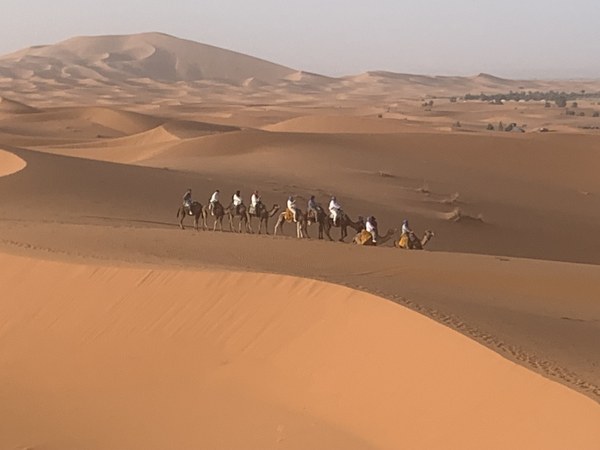
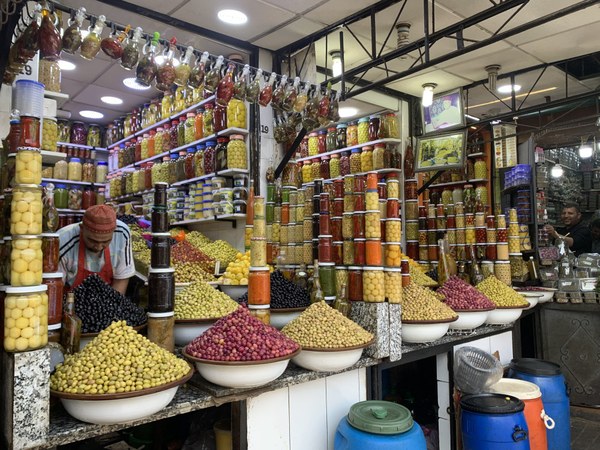
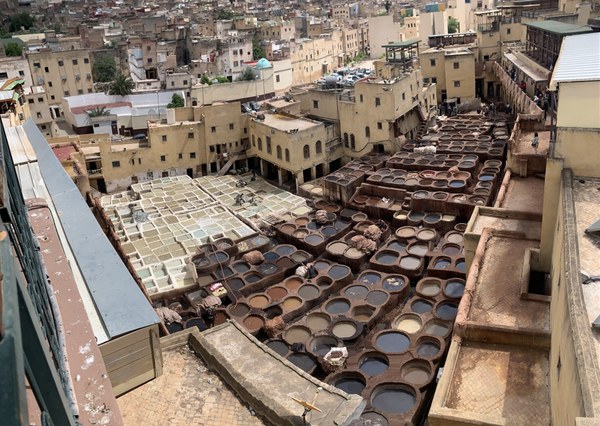
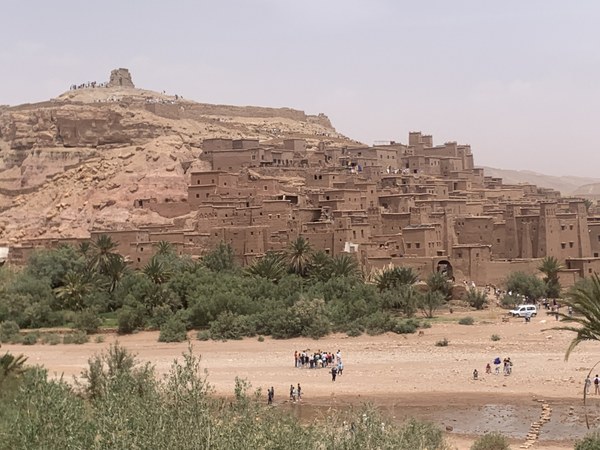
 Sharon Carlson
Sharon Carlson